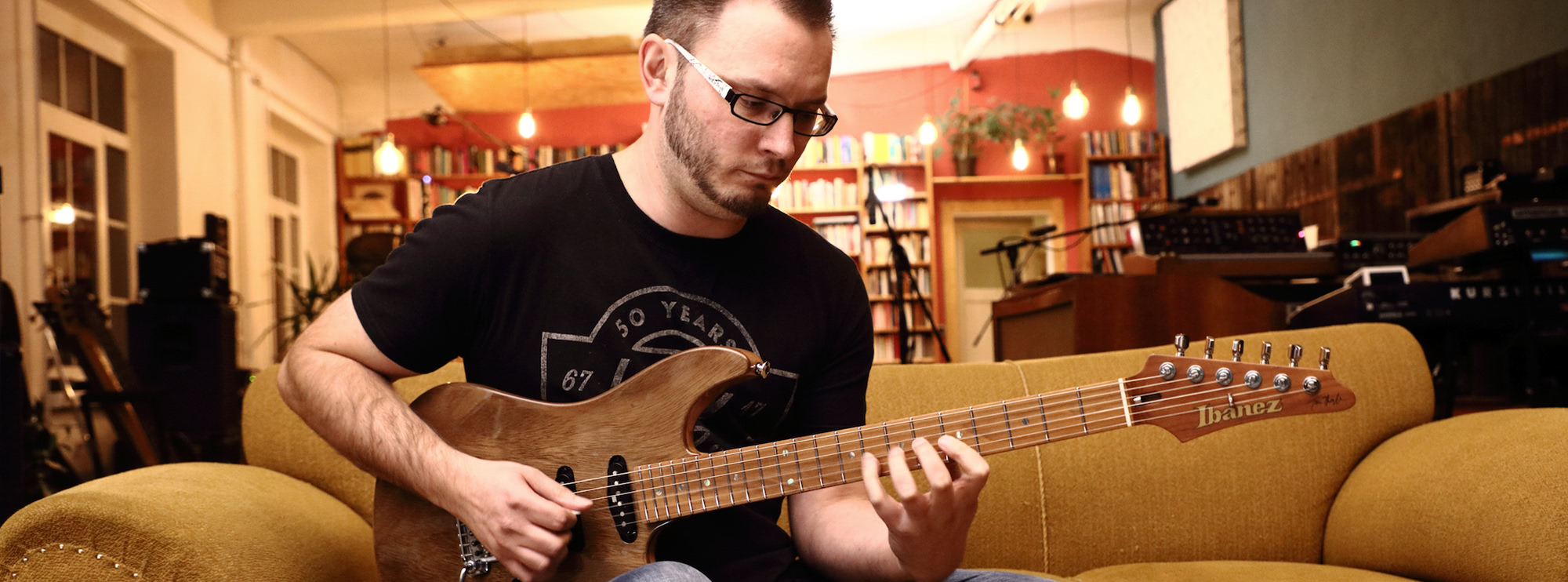"Barracuda" by Heart
"Barracuda" by Heart is an iconic track known for its driving rhythm, dynamic guitar riffs, and powerful vocals. Released in 1977, this hard rock anthem showcases the talents of Nancy Wilson and Roger Fisher, the primary guitarists behind the song's distinctive sound. At LickLibrary.com, our note-for-note guitar lesson breaks down the techniques and nuances found in this classic hit, allowing you to master its signature parts while improving your overall playing skills. Sam Bell breaks down this classic track in this exclusive Lick Library video tutorial.
About the Guitarists: Nancy Wilson and Roger Fisher
Nancy Wilson and Roger Fisher are the backbone of Heart's guitar-driven sound. Nancy, with her versatile and melodic approach, blends intricate rhythms with bold, melodic leads. Roger Fisher complements her style with his dynamic, aggressive playing and use of innovative techniques. Together, their interplay in "Barracuda" represents the epitome of dual-guitar harmonies, capturing the energy and creativity of '70s rock.
Their work on "Barracuda" has influenced countless guitarists, blending blues-based rock with progressive and folk elements. By studying their techniques, you'll not only gain insight into this classic song but also enhance your ability to integrate a variety of styles into your playing.
Techniques Featured in the Lesson
Galloping Rhythms
The iconic riff in "Barracuda" is built around a galloping rhythm. This technique involves fast, consistent picking patterns that mimic a galloping horse, often achieved through precise alternate picking. Learning this pattern improves your timing, stamina, and ability to maintain speed without sacrificing clarity.
Palm Muting
A key to the song's driving intensity is the use of palm muting. This technique involves lightly resting your palm on the strings near the bridge to dampen the sound, creating a tight, percussive effect. Palm muting is essential for controlling dynamics and adding rhythmic texture to your playing.
Power Chords
The foundational structure of the main riff relies heavily on power chords. These two- or three-note chords create a bold, full sound and are a staple of rock guitar. Mastering power chords will enhance your ability to play rhythm guitar in a variety of genres.
Slides
Smooth transitions between notes in the riff are achieved using slides. This technique connects notes fluidly, adding an expressive, seamless quality to your playing.
String Bending
The solo section features expressive string bending to create tension and emotion. By practicing bends, you'll develop finger strength, pitch accuracy, and dynamic control.
Vibrato
Adding depth and character to the bends, vibrato is used to give notes a singing quality. This technique helps you infuse personality and emotion into your lead playing.
Double Stops
The interplay between lead and rhythm guitar parts includes double stops, where two notes are played simultaneously. These create a fuller, harmonic sound and are perfect for embellishing melodies or riffs.
Rakes
Roger Fisher's lead work often incorporates rakes, which involve muting multiple strings before striking the intended note, creating a dramatic percussive sweep. This adds flair and attack to solos and phrases.
Harmonics
Natural and artificial harmonics appear in the song, lending ethereal, bell-like tones. These are a great way to explore different tonal textures and expand your repertoire of techniques.
Arpeggiated Chord Progressions
The bridge features arpeggiated chord progressions, where the notes of a chord are played individually. This technique refines your picking accuracy and adds elegance to chord-based sections.
Benefits of Learning "Barracuda"
- Improved Timing and Precision: The galloping rhythm and palm-muted riffs demand precise control and coordination.
- Versatile Technique Mastery: Incorporating slides, bends, and vibrato enriches your expressive capabilities.
- Enhanced Dynamic Control: Mastering techniques like palm muting and harmonics builds your ability to shape the tone and texture of your playing.
- Dual Guitar Harmonies: Learning how the parts interplay provides insight into arranging complementary guitar lines.
Guitar Techniques Used in the Lesson
- Vibrato
- Alternate Picking
- Palm Muting
- Power Chords
- Slides
- String Bending
- Double Stops
- Rakes
- Harmonics
- Arpeggiated Chord Progressions
- Galloping Rhythms
Dive into our lesson for "Barracuda" and unlock these powerful techniques to elevate your guitar playing today!

About The Tutor
Tutor Profile
Sam Bell
Sam Bell has been playing guitar from the age of 4, since then he has played many styles from Funky Blues to screaming Metal/Fusion on 8 string guitar. A member of UK tech metal band ‘Mask of Judas’, he is also currently writing his own solo instrumental album. He also...



